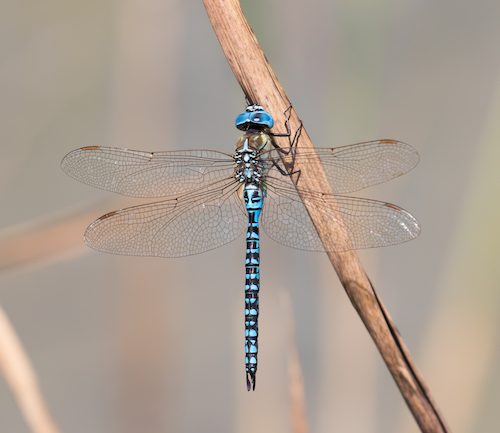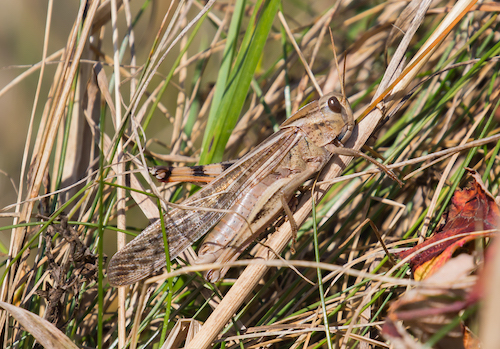In this article, originally published as a blog post on our website in 2019, Tony Blunden describes some of the migratory dragon- and damselflies you might be lucky enough to see on The Lizard. He also describes an encounter in 2018 with a Migratory Locust.
One of the joys of The Lizard is its location as the first or last land for many species on migration, and for potential colonisation. With a changing climate, unusual sightings could become just that, i.e. ‘unusual’, and are species or new colonisers that are about to become a common residents. Indeed, dragonflies are undergoing notable changes, with records of new species for Cornwall colonising, breeding and becoming resident here.

In 2018, these included the Small Red-eyed Damselfly and Southern Migrant Hawker, with notable movements of potential southern colonist species in late autumn. There were also large numbers of sightings of Red-veined Darters and Vagrant Emperors in October 2018.

A Migratory Locust sighting
On the migrant insect front, a record of a Migratory Locust (Locusta migratoria) on The Lizard was also of note, and coincided with a small number of other records along the south coast.
During a brief coffee break between writing reports on 26/9/18, I headed to the garden for some air. Walking along the path though some longer grassland in the paddock area of the garden I disturbed a large orthopteran, which flew rapidly and strongly for around 15 m before diving into another patch of longer grass.
Migratory Locust was the best fit for colouration and size. I checked the area a few more times that day, but with no further sightings. The next day, passing close to where the locust had disappeared, I disturbed it again from 4 m away. This time, it flew only 2 m before landing on a Cornish Hedge. After a couple of minutes of searching the spot with binoculars, I located it sunbathing and managed to take a few records shots. A quick read of reference material seemed to indicate very few recent records, but there were some notable historic influxes, when they were quite widespread and numerous in occurrence.
There were further records in 2018, including well documented / photographed sightings in Devon and on the Isles of Scilly.
Published: January 2019
Author: Tony Blunden
